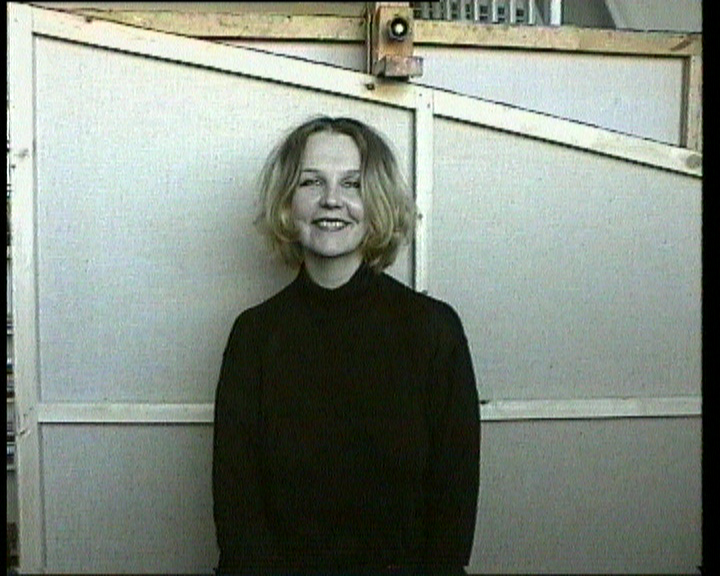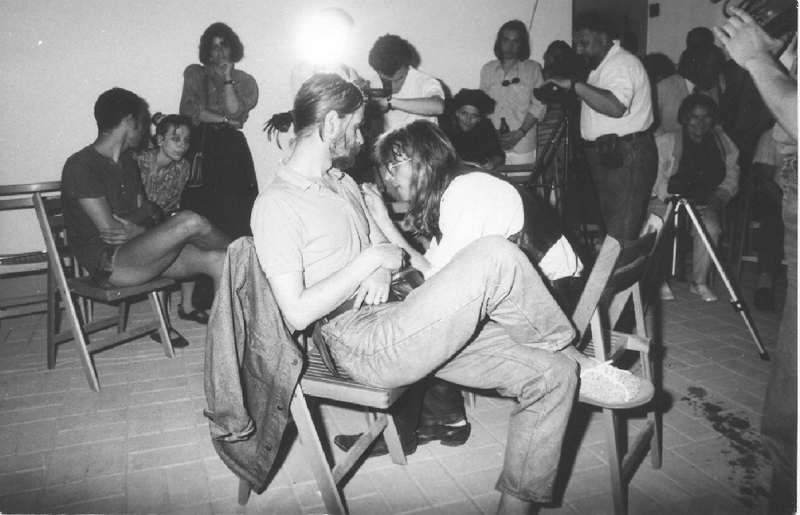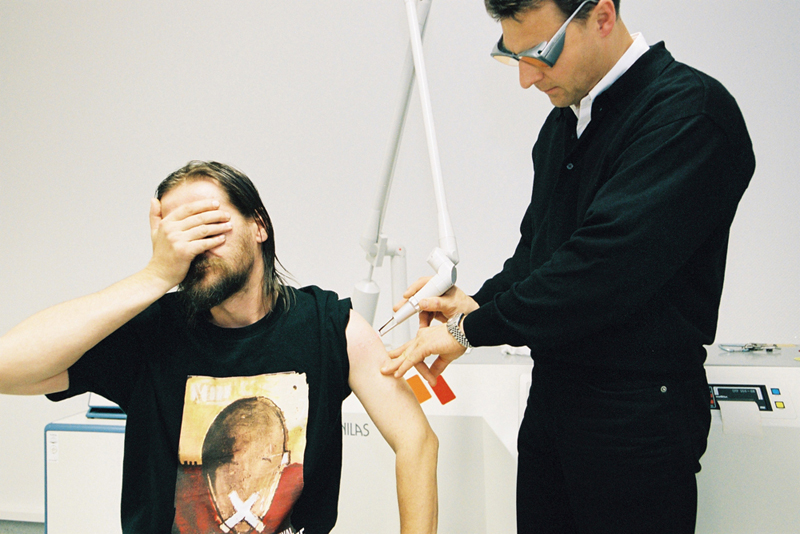Contemporary East European Art in the Era of Globalization: From Identity Politics to Cosmopolitan Solidarity (Articles)
With integration in the globalized art world, the ever-elusive notion of contemporary East European art is today becoming increasingly intangible and diverse. These changed circumstances are reflected in the East European art scene which now includes artists that are not necessarily based in their native countries, but may still work with the legacy of shared histories and experiences; artists living in the region but working internationally without the burden of their own socio-political past; as well as non-native artists who work either in collectives or individually and who have settled in the capitals of the former Eastern Bloc, or simply chose Eastern Europe as the focus of their artistic research.
Indicative of the current situation is the fact that artists from Eastern Europe regularly feature in major biennials, are represented as a matter of course by leading international galleries, can be selected for prestigious art prizes, and generally merge with the artistic multitude living precariously in transnational communities around the globe. The transition undergone by East European art has also been reflected in the preoccupations of contemporary artists. Arguably a distinction can be made between the first post-communist decade, when artists were frequently drawn to explore the grand narratives of memory, trauma and collective identities of the socialist past, and the situation in more recent years, in which artistic involvement with the politics of identity has diversified into new concerns that are often characterized by a sense of cosmopolitan solidarity.
 Although the postmodernism of the 1990s was in general preoccupied with questions of identity, be it of nation, gender, or minority, the rise of identity politics in Eastern Europe in the first post-communist decade was driven by the wish to reconnect with the cultures of neighbouring countries, knowledge of which had been obscured or distorted by the borders erected during the era of state socialism. Identity politics was also manifested in a post-modern attitude towards the strategic construction of regional identities, and lay behind the popularisation of categories such as East European art, Baltic art and Balkan art. Paradigmatic of the intertwining of national and East European identities in this period is Kai Kaljo’s film A Loser (1997), in which the artist herself stands in front of the camera and makes revealing statements such as “I am an Estonian artist” and “I earn $90 a month”, followed by a burst of canned laughter, pointing to the predicament facing artists following the collapse of the Soviet Union.
Although the postmodernism of the 1990s was in general preoccupied with questions of identity, be it of nation, gender, or minority, the rise of identity politics in Eastern Europe in the first post-communist decade was driven by the wish to reconnect with the cultures of neighbouring countries, knowledge of which had been obscured or distorted by the borders erected during the era of state socialism. Identity politics was also manifested in a post-modern attitude towards the strategic construction of regional identities, and lay behind the popularisation of categories such as East European art, Baltic art and Balkan art. Paradigmatic of the intertwining of national and East European identities in this period is Kai Kaljo’s film A Loser (1997), in which the artist herself stands in front of the camera and makes revealing statements such as “I am an Estonian artist” and “I earn $90 a month”, followed by a burst of canned laughter, pointing to the predicament facing artists following the collapse of the Soviet Union.
The second post-communist decade can also be characterized as the era of post-transition.(Maja and Reuben Fowkes, “From Post-Communism to Post-Transition,” The Art Book vol 16 no 1 (February 2009).) This is due to the fact that on the one hand many of the political goals of the transition have been achieved, while on the other, belief in the utopian promise of that transition has given way to a more cynical assessment of economic and social reality in a globalized Eastern Europe. This has brought with it a distinct shift in artistic interests.
Symptomatically, while in 1993 Dan Perjovschi had the word Romania tattooed on his arm in a performance that affirmed both his national and East European identity, in 2003 he decided to take back this act of identification by having the tattoo removed. His action also pointed to the submersion of national identity, its dispersal within a globalized cultural field in which multiple and fluid forms of belonging coexist. Commenting on the process of tattoo removal using medical lasers, the artist has stated: “ROMANIA didn’t disappear from my body, it only spread itself so as it is no longer visible.”(See artist’s website: www.perjovschi.ro) This overcoming of crude national identity and the shift towards a more post-national sensitivity should not be understood in opposition to national identity, but rather as leading to more complex and multi-layered forms of belonging. According to Jürgen Harbermas, the possibility for the post-national is to be found in the emergence of a what he calls “cosmopolitan solidarity” that goes “beyond the affective ties of nation, language, place and heritage.”(Jürgen Habermas, The Postnational Constellation (Cambridge: Polity, 2000), xiv.)
 When Roman Ondák was selected for the Czechoslovak Pavilion at the 2009 Venice Biennial he was aware of the politics surrounding the only post-socialist pavilion that managed to bridge a geopolitical divide by sharing the space between two now independent countries. He designed an environment entitled Loop in which he brought the garden setting surrounding the pavilion into the building, literally reflecting the scenery of trees and shrubs in the vicinity to create a looped reality accessed along a gravel path that passes seamlessly through the building. Through this installation the artist avoided the apparent demands of national representation:“I’m representing Slovakia in the Czechoslovak Pavilion. But, by doing this work, I don’t feel I’m representing the country… it seems as if I’m not here, and my work is not here. I’m playing with the disappearance of the pavilion as it merges into its surroundings.” Ondák continues, “I’m in the pavilion, and I’m not completely erasing my nationality, but this is suppressed by the way I participate.”(Roman Ondák’s interview “Roman Ondák discusses the Czech/Slovak Pavilion” on www.artforum.com.)
When Roman Ondák was selected for the Czechoslovak Pavilion at the 2009 Venice Biennial he was aware of the politics surrounding the only post-socialist pavilion that managed to bridge a geopolitical divide by sharing the space between two now independent countries. He designed an environment entitled Loop in which he brought the garden setting surrounding the pavilion into the building, literally reflecting the scenery of trees and shrubs in the vicinity to create a looped reality accessed along a gravel path that passes seamlessly through the building. Through this installation the artist avoided the apparent demands of national representation:“I’m representing Slovakia in the Czechoslovak Pavilion. But, by doing this work, I don’t feel I’m representing the country… it seems as if I’m not here, and my work is not here. I’m playing with the disappearance of the pavilion as it merges into its surroundings.” Ondák continues, “I’m in the pavilion, and I’m not completely erasing my nationality, but this is suppressed by the way I participate.”(Roman Ondák’s interview “Roman Ondák discusses the Czech/Slovak Pavilion” on www.artforum.com.)
The disavowal of the automatic primacy of the category of the nation is evident from Ondák’s clear withdrawal from the politics of national representation. The Slovak artist representing Slovakia in the competitive national arena of the Giardini succeeds in what Gayatri Spivak has called “setting limits to mere identitarianism” by refusing to produce “a naturalized, homogenous identity.”(Gayatri Spivak, Other Asias (Oxford: Blackwell, 2008), 9.) In addition, by replanting the shrubs after the biennial closed, the artist gave the pavilion “the smallest possible environmental footprint” and drew attention to the common situation after the end of each biennial, when the Giardini are filled with waste and discarded materials left over from the exhibition installations. The reference to ecological concerns, which necessarily exceed national boundaries and require global collaboration, is another aspect of Ondák’s pavilion that points to an interest in emerging forms of post-national solidarity.
The synchronicity of global cultures and the rapid speed of information exchange reinforces another key aspect of globalization with ramifications for East European art, that of the emergence of new forms of migration. This phenomenon is frequently discussed in an art context in terms of exiles and nomads,(TJ Demos, “The Ends of Exile: Towards a Coming Universality,” in Nicholas Bourriaud, ed., Altermodern, (London: Tate Publishing, 2009).) and it often gives rise to cynicism about the claims for a “utopian nomadism” reserved for the economically privileged. Spivak for example contrasts the “cosmopolitanism of the global elite [with] the passive exposure to multi-nationality in the everyday of the global underclass.”(Spivak, Other Asias (Oxford: Blackwell, 2008), 237.) However, the position of the majority of artists, whether they choose to settle in Prague, Berlin or New York, should perhaps be discussed in terms not of privilege but of the shared precarité of unstable and insecure work and living conditions that have become more and more dominant in our “flexible” society. There are also strong lines of sympathy and solidarity between transnational artists and other migrants, with many artistic projects dealing, for example, with the injustices of Fortress Europe.
Furthermore, we would like to draw attention to the fact that migration is also happening on the territory of Eastern Europe, where minorities are still discussed in terms of ethnicity, and where the existence of transcultural communities is rarely acknowledged. Recently an exhibition of foreign artists who settled in Budapest since 1989 problematized the issue of how to accommodate their work within the nationally oriented art historical narratives of the post-socialist countries.(See, Maja and Reuben Fowkes, Revolutionary Decadence: Foreign Artists in Budapest Since 1989 (Manchester Metropolitan University and Museum Kiscell Budapest, 2009).) During a residency in Hungary, Polish artist Johanna Rajkowska produced a work symbolically entitled Airways (2008), which consisted of a two-channel projection that showed parallel footage of the inauguration of an extremist rightwing group, the Magyar Garda, on the main square of Budapest and shots of a group of people that the artist invited for a flight on an aging Soviet passenger plane above the city and along the Danube Bend. According to Rajkowska, the choice of passengers was not accidental; they came from Syria, Mongolia, Nigeria, Bulgaria, Russia, Serbia, Great Britain and China, all foreigners living in Budapest. There was also a homeless man among them, two gay people, two Gypsies, a Jew, and surprisingly two members of Hungary’s far-right organizations.
For the artist, the 1949 plane serves a symbol of Hungary itself, as she explains: “Whether the plane flies safely depends on the pilot’s skills as well as on how the passengers behave – whether they observe the social contract or try to pry the door open or snatch the joystick away from the pilot. So the airplane becomes a symbolic territory (where the minorities became majority) in which a group of people has agreed to spend an hour together despite the fact that all the conflicts are still present and not solved.”(See artist’s website: www.rajkowska.com last accessed 15 July 2010.) The work refers to the reality of a complex cultural diversity that exists in present-day Hungary. Through the metaphor of an old and rather unstable plane, the artist makes us aware of the fragility of the situation and how easily things can get out of hand.
Like the art created under its name, the notion of Eastern Europe has itself migrated over the last two decades, losing political relevance as the original geopolitical designation of the Eastern Bloc has faded into history. The transformations brought by the entry of even ex-Soviet republics into the European Union and NATO has emptied the old term Eastern Europe of its contested political significance, but perhaps made it a more open and productive category in other ways. Eastern Europe, which is no longer defined by Soviet control, but only by a differentiated historical experience of socialism, remains less loaded than many associated sub-terms, such as Balkan Art, Baltic Art or even East Central European art, all of which imply geographical exclusions. This liberated concept of Eastern Europe may offer artists a context in which to deal with both major themes associated with the broad heritage of communism and the social and political dilemmas of post-communism, as well as providing a less ideological space in which to explore singular memories, local particularities and global issues of post-national solidarity.









